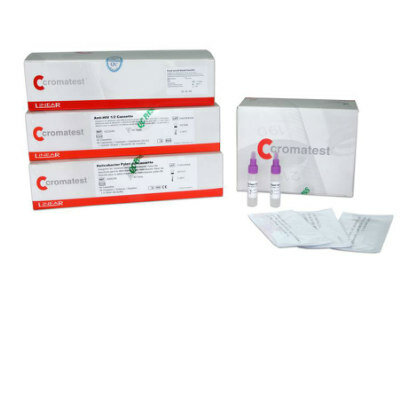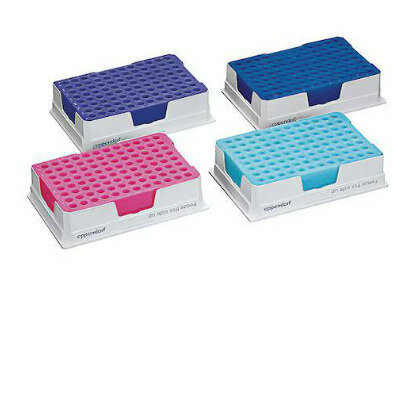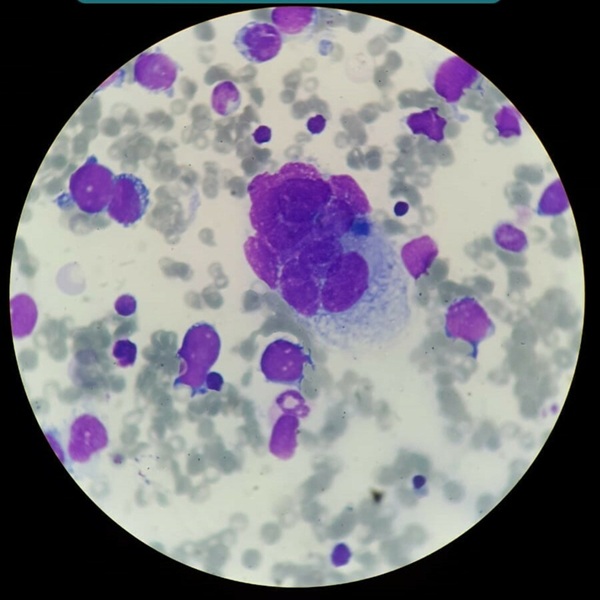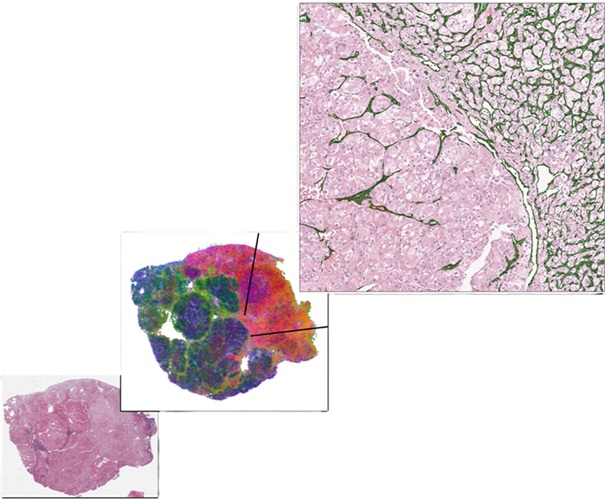Genes Discovered Influence Risk of Developing Leprosy
|
By LabMedica International staff writers Posted on 25 Mar 2015 |
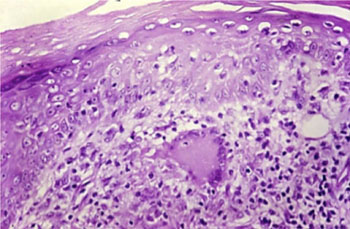
Image: Histopathology of tuberculoid leprosy in a skin section (Photo courtesy Dr. D.S. Ridley, Wellcome Images).
Leprosy, a chronic dermatological and neurological disease, is caused by infection with Mycobacterium leprae, and its manifestation, progression and prognosis are strongly associated with the proficiency of the patient's immune system.
The ability to predict the risk of contracting leprosy can help guide decisions made by public healthcare policymakers when drafting preventative measures for high-risk medical staff working in close contact with leprosy patients.
Scientists at the Genome Institute of Singapore (A*STAR, Singapore) conducted a three-stage genome-wide association studies (GWAS) of leprosy in the Chinese population. The genome-wide discovery analysis (stage 1) involved two independent data sets: a previously published GWAS data set of 706 leprosy cases, 1,225 healthy controls and 4,362 individuals with immune-related diseases as population controls from northern China of Chinese Han descent and a new unpublished data set of 842 leprosy cases and 925 controls from northern and southern China.
The second independent study was genotyped using Human 660K-Quad BeadChips (Illumina; San Diego, CA, USA). The scientists discovered six new susceptibility loci, and further gene prioritization analysis of these loci implicated Basic Leucine Zipper Transcription Factor, ATF-Like 3 (BATF3), Coiled-Coil Domain Containing 88B (CCDC88B) and Class II, major histocompatibility complex, transactivator-Suppressor of cytokine signaling 1 (CIITA-SOCS1) as new susceptibility genes for leprosy. They found the same genes linked to leprosy susceptibility also affect the level of aggression expressed by the immune system observed in autoimmune and inflammatory diseases. A person with an overly-aggressive immune system may have a good defense against infection, but stands a higher risk of developing autoimmune diseases where one's own white blood cells attack healthy cells that can lead to death in severe cases.
Jianjun Liu, PhD, a professor and lead author of the study, said, “Although commonly viewed as a medieval affliction, leprosy remains a major health problem in developing countries, claiming over 200,000 new patients worldwide annually with two to three million people permanently disabled. With the discovery of more gene variants that affect the risk of developing leprosy, we can develop better diagnostic, treatment and preventive strategies to one day eradicate leprosy permanently.” The study was published online on February 3, 2015, in the journal Nature Genetics.
Related Links:
Genome Institute of Singapore
Illumina
The ability to predict the risk of contracting leprosy can help guide decisions made by public healthcare policymakers when drafting preventative measures for high-risk medical staff working in close contact with leprosy patients.
Scientists at the Genome Institute of Singapore (A*STAR, Singapore) conducted a three-stage genome-wide association studies (GWAS) of leprosy in the Chinese population. The genome-wide discovery analysis (stage 1) involved two independent data sets: a previously published GWAS data set of 706 leprosy cases, 1,225 healthy controls and 4,362 individuals with immune-related diseases as population controls from northern China of Chinese Han descent and a new unpublished data set of 842 leprosy cases and 925 controls from northern and southern China.
The second independent study was genotyped using Human 660K-Quad BeadChips (Illumina; San Diego, CA, USA). The scientists discovered six new susceptibility loci, and further gene prioritization analysis of these loci implicated Basic Leucine Zipper Transcription Factor, ATF-Like 3 (BATF3), Coiled-Coil Domain Containing 88B (CCDC88B) and Class II, major histocompatibility complex, transactivator-Suppressor of cytokine signaling 1 (CIITA-SOCS1) as new susceptibility genes for leprosy. They found the same genes linked to leprosy susceptibility also affect the level of aggression expressed by the immune system observed in autoimmune and inflammatory diseases. A person with an overly-aggressive immune system may have a good defense against infection, but stands a higher risk of developing autoimmune diseases where one's own white blood cells attack healthy cells that can lead to death in severe cases.
Jianjun Liu, PhD, a professor and lead author of the study, said, “Although commonly viewed as a medieval affliction, leprosy remains a major health problem in developing countries, claiming over 200,000 new patients worldwide annually with two to three million people permanently disabled. With the discovery of more gene variants that affect the risk of developing leprosy, we can develop better diagnostic, treatment and preventive strategies to one day eradicate leprosy permanently.” The study was published online on February 3, 2015, in the journal Nature Genetics.
Related Links:
Genome Institute of Singapore
Illumina
Latest Molecular Diagnostics News
- Groundbreaking Molecular Diagnostic Test Accurately Diagnoses Major Genetic Cause of COPD
- First-in-Class Diagnostic Blood Test Detects Axial Spondyloarthritis
- New Molecular Label to Help Develop Simpler and Faster Tuberculosis Tests
- Biomarker Discovery Paves Way for Blood Tests to Detect and Treat Osteoarthritis
- Liquid Biopsy Assay Detects Recurrence in CRC Patients Prior to Imaging
- Ultra Fast Synovial Fluid Test Diagnoses Osteoarthritis and Rheumatoid Arthritis In 10 Minutes
- Genetic-Based Tool Predicts Survival Outcomes of Pancreatic Cancer Patients
- Urine Test Diagnoses Early-Stage Prostate Cancer
- New Genetic Tool Analyzes Umbilical Cord Blood to Predict Future Disease
- Spinal Fluid Biomarker for Parkinson’s Disease Offers Early and Accurate Diagnosis
- Revolutionary Blood Test Detects 30 Different Types of Cancers with 98% Accuracy
- Simple Blood Test Better Predicts Heart Disease Risk
- New Blood Test Detects 12 Common Cancers Before Symptoms Appear
- Blood Test Could Predict Relapse of Autoimmune Blood Vessel Disease
- First-of-its-Kind Blood Test Detects Trauma-Related Diseases
- Key Gene Identified in Common Heart Disease Unlocks Life-Saving Diagnostic Potential
Channels
Clinical Chemistry
view channel
AI-Powered Blood Test Accurately Detects Ovarian Cancer
Ovarian cancer ranks as the fifth leading cause of cancer-related deaths in women, largely due to late-stage diagnoses. Although over 90% of women exhibit symptoms in Stage I, only 20% are diagnosed in... Read more
Automated Decentralized cfDNA NGS Assay Identifies Alterations in Advanced Solid Tumors
Current circulating cell-free DNA (cfDNA) assays are typically centralized, requiring specialized handling and transportation of samples. Introducing a flexible, decentralized sequencing system at the... Read more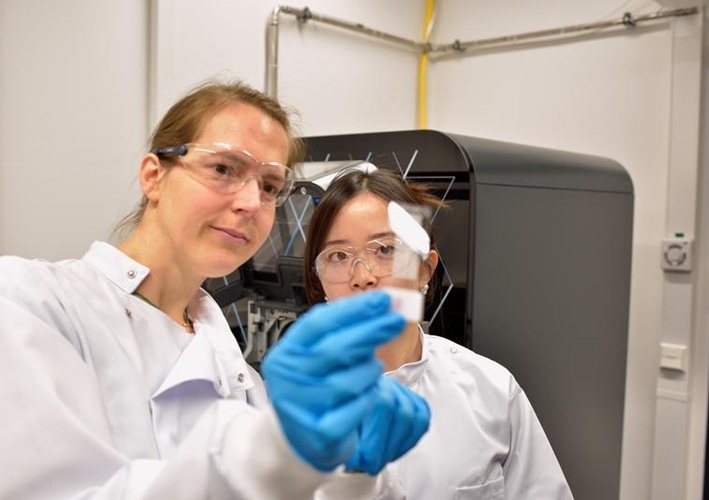
Mass Spectrometry Detects Bacteria Without Time-Consuming Isolation and Multiplication
Speed and accuracy are essential when diagnosing diseases. Traditionally, diagnosing bacterial infections involves the labor-intensive process of isolating pathogens and cultivating bacterial cultures,... Read more
First Comprehensive Syphilis Test to Definitively Diagnose Active Infection In 10 Minutes
In the United States, syphilis cases have surged by nearly 80% from 2018 to 2023, with 209,253 cases recorded in the most recent year of data. Syphilis, which can be transmitted sexually or from mother... Read moreHematology
view channel
First Point-of-Care Heparin Monitoring Test Provides Results in Under 15 Minutes
Heparin dosing requires careful management to avoid both bleeding and clotting complications. In high-risk situations like extracorporeal membrane oxygenation (ECMO), mortality rates can reach about 50%,... Read more
New Scoring System Predicts Risk of Developing Cancer from Common Blood Disorder
Clonal cytopenia of undetermined significance (CCUS) is a blood disorder commonly found in older adults, characterized by mutations in blood cells and a low blood count, but without any obvious cause or... Read moreImmunology
view channel
Stem Cell Test Predicts Treatment Outcome for Patients with Platinum-Resistant Ovarian Cancer
Epithelial ovarian cancer frequently responds to chemotherapy initially, but eventually, the tumor develops resistance to the therapy, leading to regrowth. This resistance is partially due to the activation... Read more
Machine Learning-Enabled Blood Test Predicts Immunotherapy Response in Lymphoma Patients
Chimeric antigen receptor (CAR) T-cell therapy has emerged as one of the most promising recent developments in the treatment of blood cancers. However, over half of non-Hodgkin lymphoma (NHL) patients... Read moreMicrobiology
view channel
Molecular Stool Test Shows Potential for Diagnosing TB in Adults with HIV
Tuberculosis (TB), caused by the bacterium Mycobacterium tuberculosis, led to 1.25 million deaths in 2023, with 13% of those occurring in people living with HIV. The current primary diagnostic method for... Read more
New Test Diagnoses Bacterial Meningitis Quickly and Accurately
Bacterial meningitis is a potentially fatal condition, with one in six patients dying and half of the survivors experiencing lasting symptoms. Therefore, rapid diagnosis and treatment are critical.... Read morePathology
view channel
Groundbreaking Chest Pain Triage Algorithm to Transform Cardiac Care
Cardiovascular disease is responsible for a third of all deaths worldwide, and chest pain is the second most common reason for emergency department (ED) visits. With EDs often being some of the busiest... Read more
AI-Based Liquid Biopsy Approach to Revolutionize Brain Cancer Detection
Detecting brain cancers remains extremely challenging, with many patients only receiving a diagnosis at later stages after symptoms like headaches, seizures, or cognitive issues appear. Late-stage diagnoses... Read moreTechnology
view channel
Advanced Predictive Algorithms Identify Patients Having Undiagnosed Cancer
Two newly developed advanced predictive algorithms leverage a person’s health conditions and basic blood test results to accurately predict the likelihood of having an undiagnosed cancer, including ch... Read more
Light Signature Algorithm to Enable Faster and More Precise Medical Diagnoses
Every material or molecule interacts with light in a unique way, creating a distinct pattern, much like a fingerprint. Optical spectroscopy, which involves shining a laser on a material and observing how... Read more
Disposable Microchip Technology Could Selectively Detect HIV in Whole Blood Samples
As of the end of 2023, approximately 40 million people globally were living with HIV, and around 630,000 individuals died from AIDS-related illnesses that same year. Despite a substantial decline in deaths... Read more
Pain-On-A-Chip Microfluidic Device Determines Types of Chronic Pain from Blood Samples
Chronic pain is a widespread condition that remains difficult to manage, and existing clinical methods for its treatment rely largely on self-reporting, which can be subjective and especially problematic... Read moreIndustry
view channel
Cepheid and Oxford Nanopore Technologies Partner on Advancing Automated Sequencing-Based Solutions
Cepheid (Sunnyvale, CA, USA), a leading molecular diagnostics company, and Oxford Nanopore Technologies (Oxford, UK), the company behind a new generation of sequencing-based molecular analysis technologies,... Read more
Grifols and Tecan’s IBL Collaborate on Advanced Biomarker Panels
Grifols (Barcelona, Spain), one of the world’s leading producers of plasma-derived medicines and innovative diagnostic solutions, is expanding its offer in clinical diagnostics through a strategic partnership... Read more




